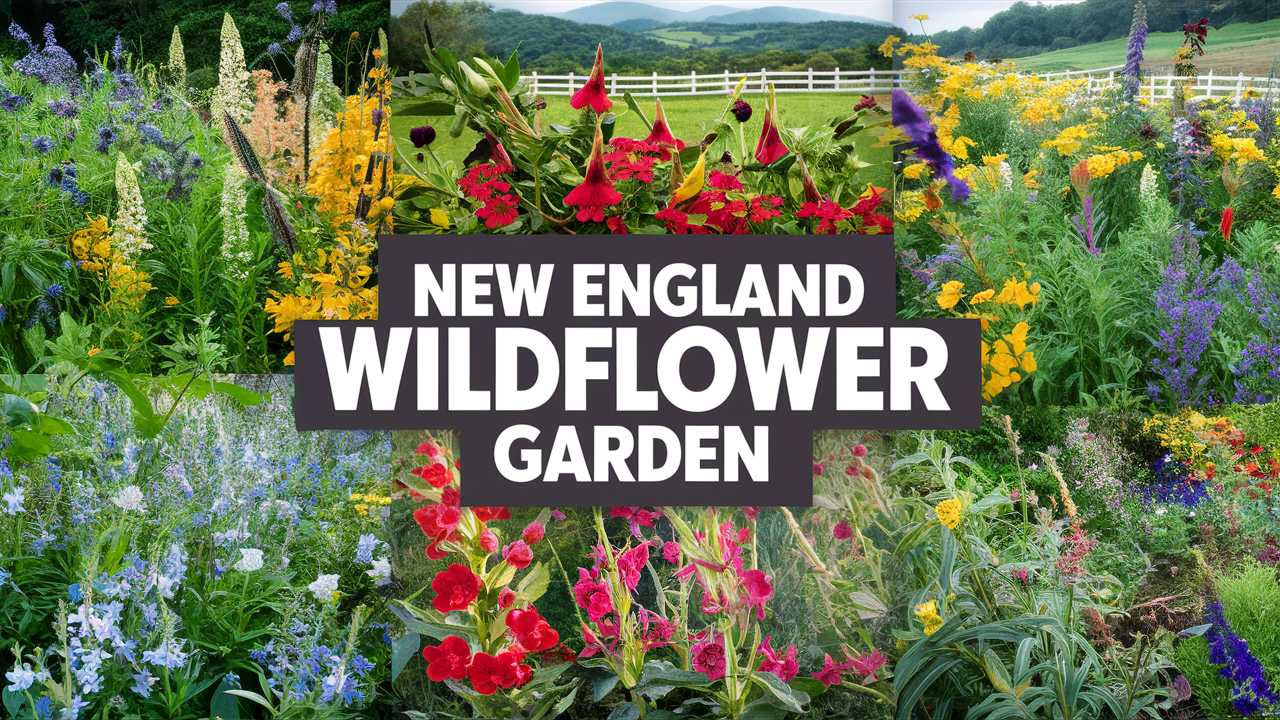This guide will explore an array of enchanting wildflowers that thrive in New England gardens, providing not just aesthetic appeal but also a connection to the region’s natural heritage.
Trillium

Trillium, often referred to as the “three-leaved bloom,” graces New England’s woodlands with its delicate beauty. These perennial herbs are identifiable by their distinctive three-petaled flowers and whorled leaves. Trillium are typically early bloomers, making their appearance in spring; they often signal the awakening of the forest after a long winter. With shades of white, pink, and red, Trillium can add a subtle charm to shaded garden areas.
Beyond their aesthetic appeal, Trillium species play essential ecological roles, serving as hosts for various pollinators. However, they need attention regarding habitat; they thrive in rich, well-drained soil with ample moisture. If you’re creating a woodland garden or a shaded area in your yard, consider incorporating Trillium for an elegant display that highlights New England’s native flora.
Lupine
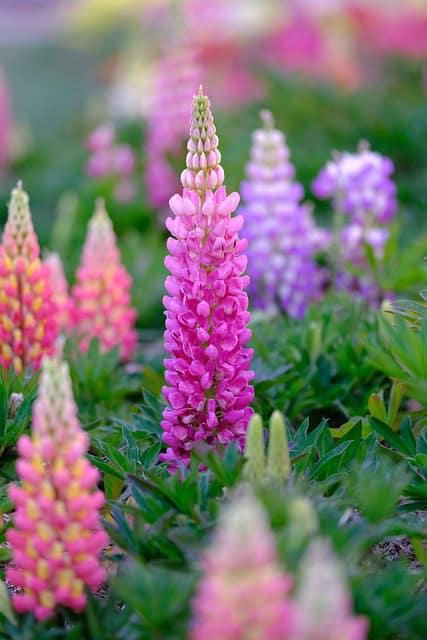
Lupine, with its tall spikes of colorful flowers ranging from blue to purple and even white, brings height and drama to any garden landscape. These perennial favorites bloom in late spring and early summer, attracting bees and butterflies that thrive on their nectar. The foliage of lupines adds a lovely textural element, featuring palmate leaves that can create a lush backdrop for other plants.
Lupine is not only beautiful but also beneficial to the soil. They are nitrogen-fixers, meaning they can enrich the soil in which they grow, making them excellent companions for other plants. These wildflowers prefer well-drained, sandy soils, so be sure to plant them in a spot that mimics their native habitat, perhaps in open fields or sunny borders. When planted en masse, lupines can create a stunning, naturalized look that celebrates the beauty of New England’s spring season.
Butterfly Weed
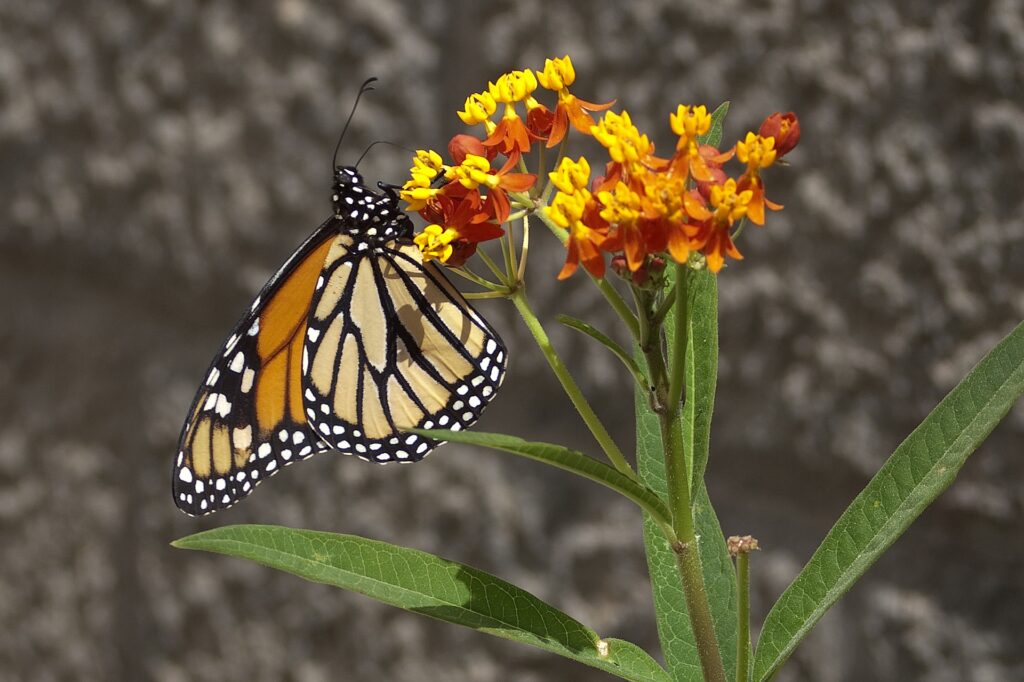
True to its name, Butterfly Weed (Asclepias tuberosa) is an excellent addition for anyone wanting to attract butterflies and other pollinators to their gardens. The bright orange clusters of flowers appear in summer and stand out brilliantly against the green backdrop of the garden. This plant is particularly important for the life cycle of the Monarch butterfly, which relies on milkweed species as a host plant.
In addition to its role in supporting pollinators, Butterfly Weed is drought-resistant and thrives in poor soils, making it an excellent choice for sustainable gardening practices. It prefers full sun and well-drained, sandy, or rocky soil. By nurturing Butterfly Weed in your garden, you create a vibrant habitat that celebrates local wildlife and adds a burst of color to your landscape.
Black-Eyed Susan
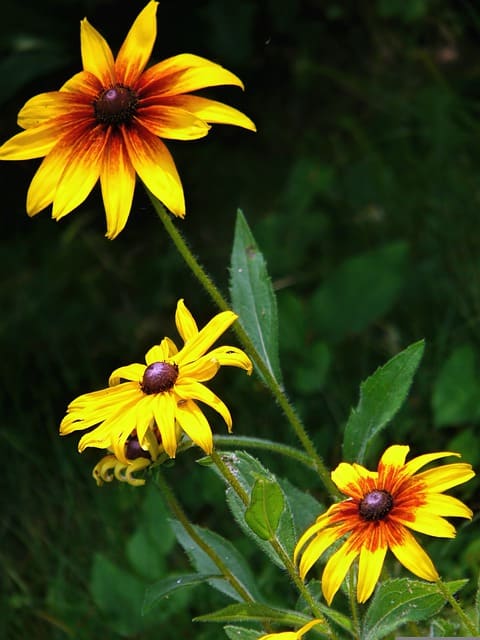
A quintessential wildflower of New England, the Black-Eyed Susan (Rudbeckia hirta) is famed for its cheerful yellow petals surrounding a dark brown or black central cone. Blooming from mid-summer to early fall, these hardy flowers add warmth and brightness to any garden, attracting a variety of butterflies, bees, and birds.
Black-Eyed Susans are tough plants that thrive in a range of conditions and soils, promoting versatility in garden design. They enjoy full sun but can tolerate some shade, making them suitable for various landscapes, from cottage gardens to prairie restorations. Their resilience and ability to self-seed make them a favorite among native plant enthusiasts, ensuring beauty and ecological function year after year.
Coneflower
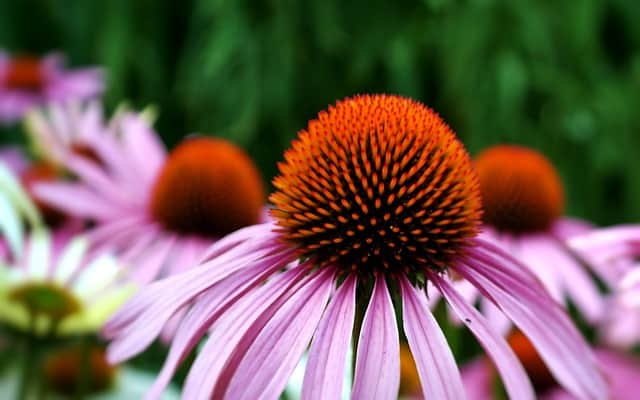
Coneflowers, or Echinacea, are revered for their striking appearance and medicinal properties. With their drooping purple petals and prominent seed heads, these daisy-like flowers bloom from summer into early fall, providing a critical late-season nectar source for bees and butterflies. Not only do they attract wildlife, but they can also be used in herbal remedies for their immune-boosting qualities.
These hardy perennials thrive in dry to medium-well-drained soils, and they prefer full sun. Once established, coneflowers require minimal maintenance, making them perfect for busy gardeners seeking to cultivate a vibrant environment with less fuss. Planting Coneflower alongside other perennials creates a layered effect and draws the eye throughout your garden, making it a delightful focal point in any New England landscape.
Goldenrod
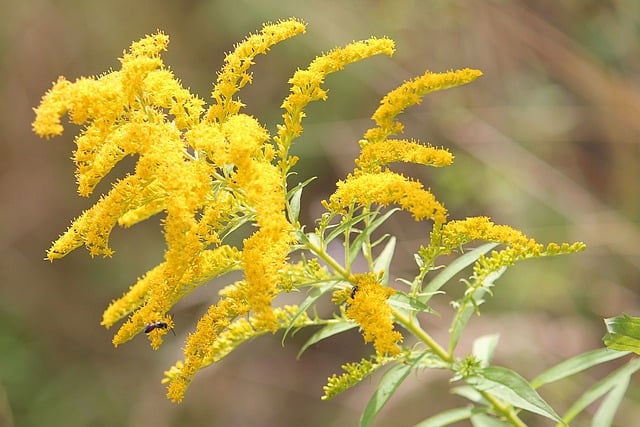
Goldenrod (Solidago spp.) is often misunderstood as an allergen; in fact, it plays a significant role in supporting New England’s ecosystems. Blooming in late summer to early fall, its brilliant yellow flowers attract many pollinators, including myriad bees and butterflies, that thrive before the cold weather sets in.
Goldenrod is adaptable and prefers full sun, thriving in various soil conditions. It can flourish in meadows, roadsides, and even on managed landscapes. If you’re looking to encourage wildlife and bolster biodiversity in your garden, consider incorporating patches of Goldenrod. Not only will it enhance the garden’s beauty in autumn, but it will also provide essential resources for wildlife during a critical time of the year.
Joe-Pye Weed
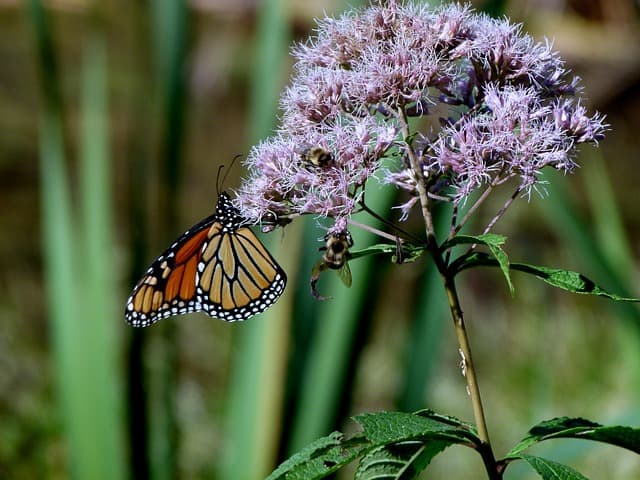
A striking presence in any border or wetland area, Joe-Pye Weed (Eutrochium purpureum) boasts tall, feathery plumes of pink flowers that can stand as high as seven feet. Blooming in late summer, these flowers are magnets for butterflies and bees, supporting pollinator populations during the warm months.
Joe-Pye Weed thrives in moist, well-drained soils and prefers partial to full sun. Its stature makes it a great choice for back borders or naturalistic settings where it can stand proud and tall. Keep in mind that this plant can spread, so it might require some management to keep it in check. By including Joe-Pye Weed in your garden, you add structural interest and create a lively habitat for pollinators.
New England Aster
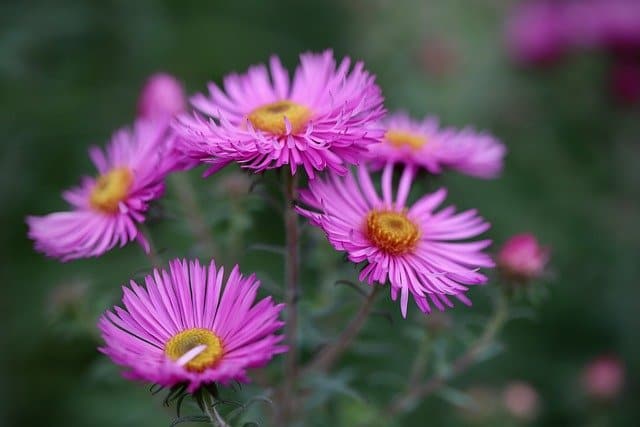
The New England Aster (Symphyotrichum novae-angliae) is a beautiful native wildflower that brings a wave of purple to the garden in late summer and fall. Featuring clusters of daisy-like flowers, this plant is not only stunning but also essential for late-season pollinators like butterflies and bees.
These asters prefer full sun to partial shade and thrive in average to moist soil conditions. Using New England Aster in your landscape not only introduces color in the garden during a less vibrant time of year but also continues to support pollinator populations that need sustenance before winter. Their versatility allows them to blend well with other perennials, making them a must-have for any native plant enthusiast.
Milkweed

Milkweed (Asclepias spp.) is arguably one of the most important wildflowers for New England gardens, especially for supporting the life cycle of the Monarch butterfly. Its nectar-rich flowers bloom in early summer, attracting numerous pollinators. The milky sap has given this plant its name and serves as a natural defense mechanism against herbivores.
Milkweed prefers full sun and thrives in well-drained soils. It can grow in meadows, fields, or even roadside areas, making it relatively easy to incorporate into many garden styles. Planting Milkweed is not just an aesthetic choice; it’s a commitment to biodiversity and ecological stewardship in your landscape. By supporting Monarch butterflies and other pollinators, you foster a richer, more vibrant ecosystem.
Blue Flag Iris
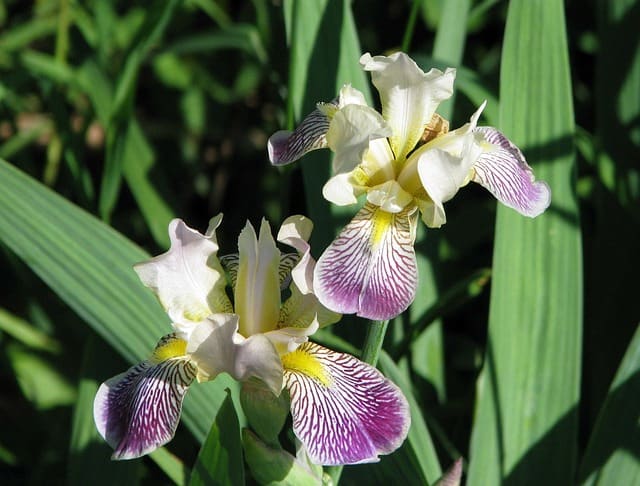
The Blue Flag Iris (Iris versicolor), with its striking blue-violet flowers, brings elegance to wetlands and moist gardens throughout New England. Blooming in late spring to early summer, the intricate petals of the Blue Flag Iris are striking and highly attractive to various bees and insects.
This iris prefers wet soils and can often be found along streams, ponds, or damp areas. Incorporating Blue Flag Iris into your garden not only enhances the beauty of water features but also encourages a greater diversity of wildlife. Their presence in your garden can establish a sense of tranquility, reminiscent of serene natural landscapes.
Wild Columbine
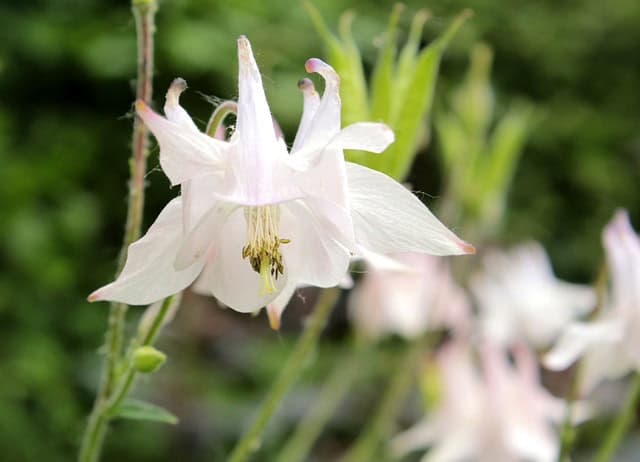
With its unique, drooping, tubular flowers in shades of red and yellow, Wild Columbine (Aquilegia canadensis) brings a touch of whimsy to any New England garden. These perennial flowers typically bloom in late spring, drawing hummingbirds and bees who are eager to sip upon their nectar.
Wild Columbine thrives in well-drained, slightly acidic soils, making them ideal for rocky garden settings or woodland edges. They prefer partial sun, ensuring that their delicate blooms receive filtered light. By planting Wild Columbine, you can celebrate the biodiversity of New England while adding a charming character to your garden, encouraging not only visual interest but also wildlife interactions.
Showy Lady’s Slipper
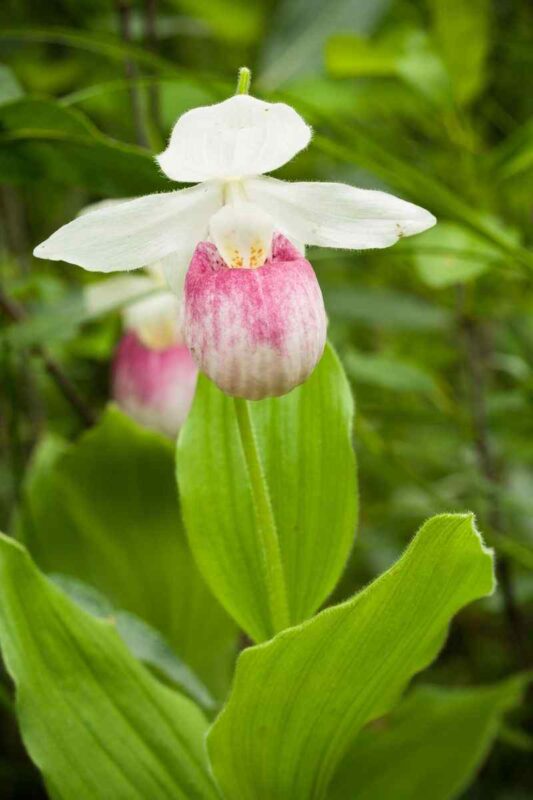
One of New England’s most exquisite wildflowers, the Showy Lady’s Slipper (Cypripedium reginae), is a rare find due to its specific habitat requirements. These orchids bloom in late spring to early summer, showcasing large, show-stopping flowers resembling slippers, hence their name. Their unique beauty and rarity make them a prized addition to any garden.
Showy Lady’s Slippers prefer moist, acidic soils and are commonly found in boggy or wetland areas. Since they rely on a symbiotic relationship with mycorrhizal fungi to thrive, it is crucial to understand that cultivating them requires thoughtful gardening practices. If you can create an environment that meets their needs, you’ll be rewarded with one of New England’s most ethereal blooms, warranting admiration and respect.
Bloodroot
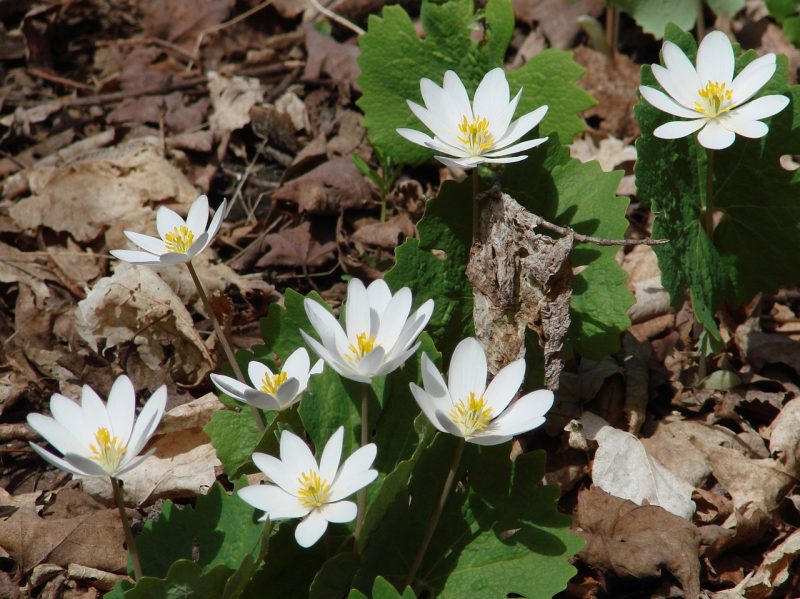
Bloodroot (Sanguinaria canadensis) is a charming spring ephemeral that unfurls its delicate white flowers in early spring, often among the first blooms of the season. The plant is named for its reddish root, which has been used in traditional medicine and dyes for centuries. Its heart-shaped leaves are equally captivating and add an additional layer of beauty as they unfurl after the flowers.
This plant thrives in moist, well-drained soils and prefers shaded or woodland areas. Bloodroot is an excellent choice for gardeners looking to establish a woodland garden, creating an enchanting display as the first light of spring breaks through. Cultivating Bloodroot becomes a way of honoring the region’s natural heritage, fostering the beauty of the understory landscape.
Blue Toadflax

Blue Toadflax (Nuttallanthus canadensis) is a delightful yet often overlooked wildflower that adds dainty charms to New England gardens. It features slender spikes of small blue flowers that bloom from late spring to early summer, creating a gentle carpet of color.
This plant prefers full sun to partial shade and grows best in well-drained, sandy soils. Blue Toadflax is a low-maintenance perennial, making it perfect for gardeners looking for low-effort beauty. Its delicate flowers appeal to a variety of pollinators, enhancing the biodiversity of your garden while providing a subtle, lovely visual interest.


